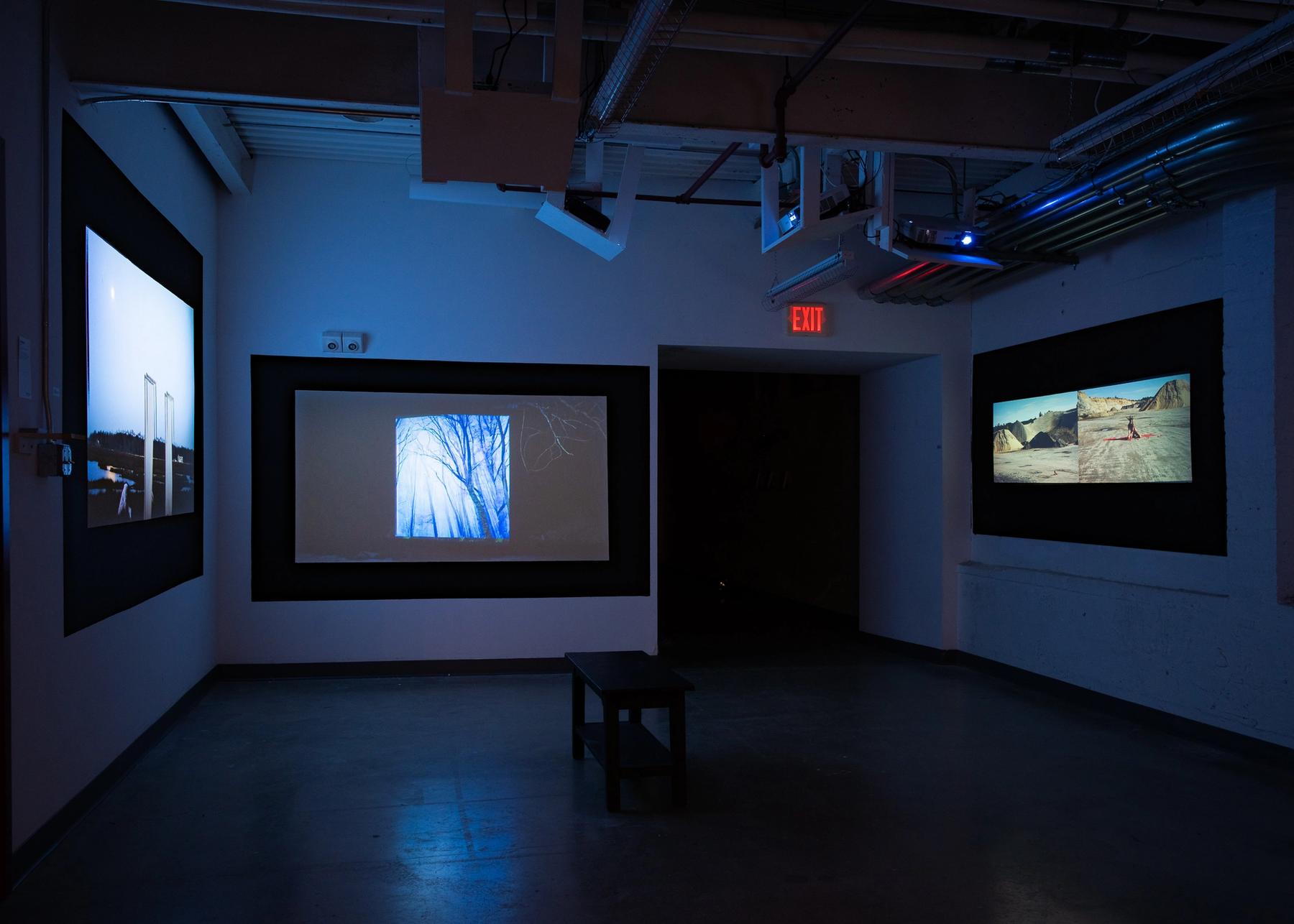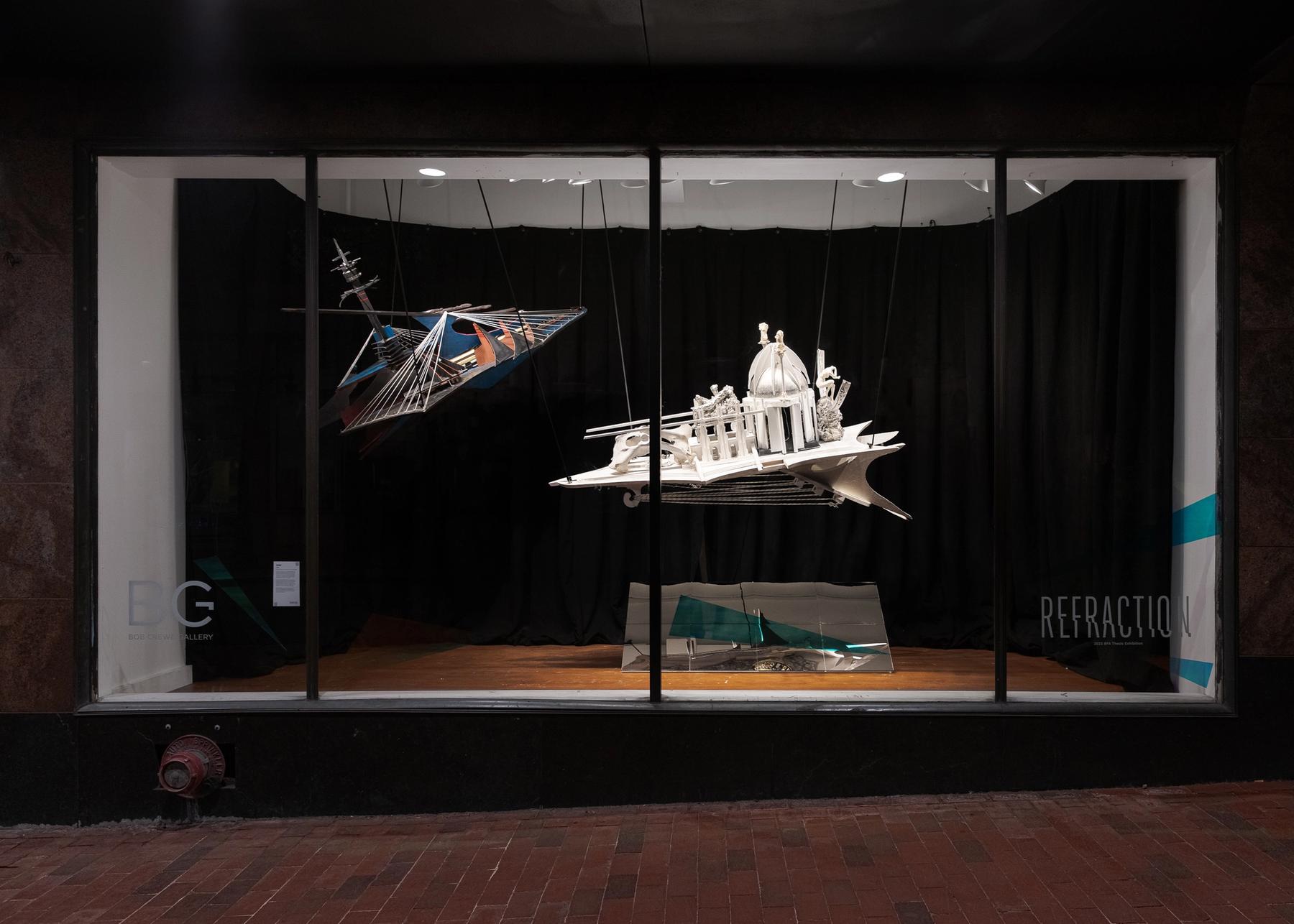Areas of Study
Bachelor of Fine Arts in Sculpture
Sculpture Program Description
The Sculpture major is a transdisciplinary department where space is the material of inquiry. As a student, you will explore the relationships between material, technique, process, scale, and context while learning the skills needed to articulate your work both visually and verbally.
Working in sculpture gives you an opportunity to learn about an impressive array of materials and processes, including:
- Video installation and performance
- Metal casting (bronze, aluminum, copper)
- Wood assemblage and welding
- Mold making and plaster casting
- Soft sculpture, sound, and kinetic forms
- Specialized techniques like prosthetic make-up, stone carving, and figure modeling
Our Sculpture Department offers many opportunities for you to find new ways to express yourself—technically, creatively, and conceptually. Our diverse faculty emphasizes critical thinking and writing to help you communicate your visions with confidence, while gaining insight into the discipline of sculpture from a historical and contemporary cultural perspective.
Our faculty and staff are composed of practicing and exhibiting artists who are consistently exhibiting their work worldwide. They will help guide you along as you build technical skills across a range of creative methods, and do the hard work of critically assessing and communicating the conceptual and formal aesthetics of your work and the work of others.
This exchange of ideas with your peers, faculty, visiting artists, and the local arts community will challenge you to advance your journey towards becoming a professional artist and an active learner within visual culture.
Life After Graduation
You will leave the program able to interpret and articulate contemporary modes of creating sculpture within your selected medium or practice, preparing you to succeed as a professional artist and creative problem solver.
Examples: Studio Artist, Mold Maker, Blacksmith, Tattoo Artist, Artist's Assistant, FX Makeup Artist, Video Editor, Teacher, Graduate Studies.
Gallery














Program & Outcomes
Faculty
Sample Courses
- SC 105 The Sculptural Imagination: Wood, Steel & Foundry Practices
- SC 106 Sculpture in Context: Installation, Multiples, Land Art
- SC 112 The Expressive Figure
- SC 264 Color Form & Space
- SC 267 Phantom Limb: The Art of Transformational Identity
- SC 272 Transdisciplinary Video Art Installation
- SC 321/322 Junior Major Studio
- SC 421/422 Senior Major Studio
Workspace & Tools
Wood shop: SawStop table saws; miter saws; bandsaws; chainsaws; skill saws; drill presses; hammer drills; belt/ disc sanders; angle grinders, die grinders; wire brush grinder; and, other hand tools
Metal shop: MIG welder; TIG welder; arc welder; oxy- acetylene welder; spot welder; plasma cutter; Ellis bandsaw; metal chop saw; sand blasting; propane forge; coal forge; sand casting; and foundry
a/v: 27” iMacs with Logic, Adobe suite, and DaVinci Resolve; multiple video projectors; sound equipment; media players; digital audio and video recorders; and DSLR cameras
Other construction tools: plaster/ mold-making studio; installation rooms; spray booth; industrial sewing machines; resin bonded sand; foundry furnace (240lb / 90lb capacity); crucibles for bronze, copper, and aluminum; electric hoist; ladders; and outdoor tools for site work
Sculpture majors each have their own private studios during their third and fourth years with 24/7 studio access.
Learning Outcomes
Students will:
- Create sculpture that demonstrates the relationship and interdependence of form, material, content, and context.
- Speak critically about the sculptural work of others from both historical and contemporary perspectives.
- Demonstrate a professional practice within the field of sculpture.
- Employ technical skills with regard to traditional and contemporary sculpture techniques.
- Develop a creative process that is centered around the investigation of form in space.
- Select applicable materials and media to powerfully communicate an idea.
- Understand the importance of context in sculpture and its relationship to content and subjective expression.
Recent Visiting Artists
2016 – present
2024-25
2023-24
2022-23
- Danielle Scott
- Raul DeLara
- Jon Kessler
- Christine Nguyen
- Helga Schmidhuber
- Holger Schmidhuber
2021-22
- Hannah Epstein
- Morgan Puett
- Maria Molteni
- Lee Mingwei
- Alyson Shotz
- Bonnie Collura
- Matt Crane
2020-21 (virtual)
- Shoplifter
- Kori Newkirk
- Dr. Paul Farber – Monument Lab
- Johannah Hutchison - ISC
- Michael Jones McKean
- Gary Ambrose
- Janine Antoni
- Vivian Beer (BFA ’00)
2019-20
2018-19
- Alex Lukas
- Elizabeth Atterbury
- Joel Weissman
- Emily Thompson
- Charles Tracey
- Jack Silverio
- Josh Dow
- Janet Biggs
- Shana Moulton
- Angela Washko
Tom Sherman
2017-18
2016-17
Course of Study
Foundation Year
Fall
- FN 101 Digital Imaging
- FN 109 3D: Materiality
- FN 113 Two-Dimensional Design
- Studio Elective
- EN 100 English Composition
- SEM 100 First Year Seminar
Spring
- DR 100 Introduction to Drawing
- FN 110 4D: Space & Temporality
- FN 108 Research & Inquiry – Studio
- SEM 108 Research & Inquiry – Academic
- AH 101 Art History Survey I
Sophomore
Fall
- SC 106 Sculpture in Context: Installation, Multiples & Land Art
- Approved Studio Elective
- Studio Elective (Student Choice)
- AH 102 Art History Survey II
- Academic Elective
Spring
- SC 105 The Sculptural Imagination: Wood, Steel Foundry Practices
- SC 351 Intro to the Discipline
- Studio Elective (Student Choice)
- AH 250 Critical Approaches to Contemporary Art
- Academic Elective
Junior
Fall
- SC 321 Sculpture Majors Studio
- SEM 353 Junior Seminar – Fine Art Topics & Practice
- Approved Studio Elective
- Art History Elective
- Academic Elective
Spring
- SC 322 Sculpture Majors Studio
- Approved Studio Elective
- Studio Elective (Student Choice)
- Art History Elective
- Academic Elective
Senior
Fall
- SC 421 Sculpture Majors Studio
- SEM 451 Professional Studio – Fine Arts
- Studio Elective (Student Choice)
- 2 Academic Electives
Spring
- SC 422 Sculpture Majors Studio
- SEM 452 Senior Synthesis
- Studio Elective (Student Choice)
- 2 Academic Electives
Course Catalog Listing
Sculpture Program FAQ
What is a sculpture degree, and what will I learn?
A sculpture degree is a studio-based Bachelor of Fine Arts program focused on exploring material, form, and space through hands-on creative processes. At Maine College of Art & Design, you’ll learn techniques such as welding, casting, video installation, and soft sculpture, while developing critical thinking and communication skills essential to a professional art practice.
What can I do with a bachelor's degree in sculpture?
Graduates of our Sculpture Program go on to careers as studio artists, fabricators, blacksmiths, FX makeup artists, mold makers, video editors, educators, and more. Some also pursue graduate studies or work in creative industries like film, design, or fine art conservation.
What kind of student thrives in the Sculpture Program?
Students who are curious, experimental, and excited by hands-on making tend to thrive. If you’re interested in pushing creative boundaries and working at the intersection of materials, ideas, and physical space, sculpture may be a strong fit.
What kinds of materials and tools will I use in the Sculpture Program?
You’ll have access to wood and metal shops, casting facilities, and digital media tools. Materials you might work with include bronze, aluminum, plaster, fabric, sound, video, and found objects. Sculpture majors also get a private studio space in their third and fourth years.
Why choose a sculpture degree at an art and design college?
At an art-focused college like Maine College of Art & Design, sculpture is surrounded by a rich environment of creative disciplines, visiting artists, and studio culture, all of which help you expand your vision and build a lasting artistic practice.
Apply for Our BFA and Major in Sculpture
Ready to create work that challenges how people experience space and form?
At Maine College of Art & Design, you’ll study sculpture in an environment that supports risk-taking, critical thinking, and hands-on exploration. With access to professional tools, 24/7 studios, and faculty who are working artists, you’ll graduate with a strong practice and a clear creative voice.
Start building a future grounded in material, movement, and meaning.
Apply Today










